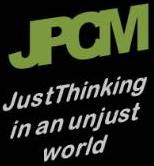Now that the EPA has ruled that CO2 emissions are an official pollutant does this mean that we will have to never exhale again? If so, what about flatulence, or even belching?
The thought of never being able to exhale beguiles me. Are CO2 filtration masks (CFMs) going to be part of the new cap and trade scheme on which Congress is currently holding hearings? If we are to be forever confined by CFMs, they will have to enable us to speak, right? If not what is Congress to do?
I mean, think about it, talking is all that Congress does. They cannot balance a checkbook, even though they are in charge of the federal purse. It seems that they cannot even read.
Therefore, if they are also limited by their CFMs I see that they have only three choices. First, but most difficult, would be for them to learn English as a Second Language (ESL). This is a daunting task. However, there are many resources out there to help them achieve this goal. Second, and the route that I would expect cynical politicians to opt for, would be for Congress to change the law by which the EPA was forced, by the Supreme Court, to make this ruling. Lastly, and the option which I believe they will ultimately choose, is to exempt themselves from the rules.




